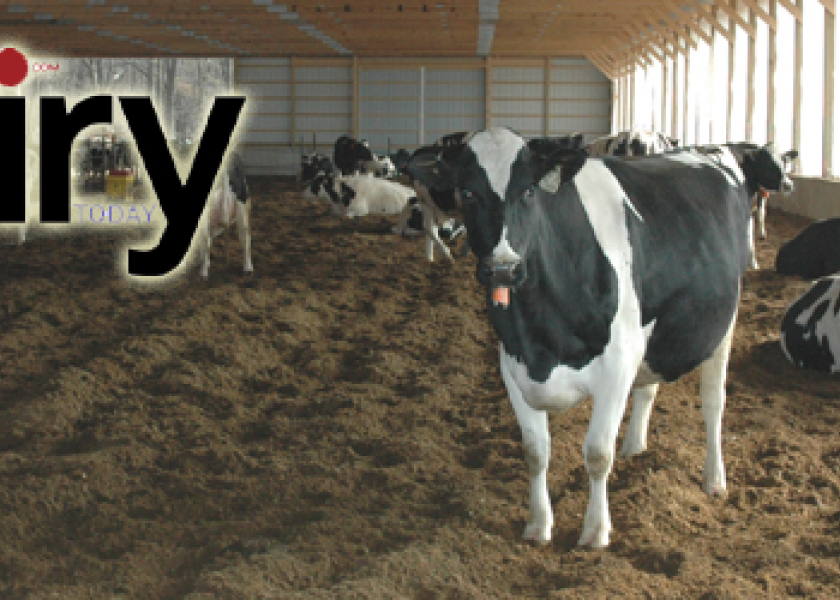Congressional Battle Over Dairy Policy is Not Over

By Craig Thomas, Michigan State University Extension
In mid-May 2013, both the Senate and House Agricultural Committees passed preliminary versions of the FARRM Act, commonly referred to as the farm bill. Both the Senate and House versions of the farm bill contained the Dairy Security Act (DSA) and rejected the Dairy Freedom Act (DFA) commonly referred to as the Goodlate and Scott Dairy Amendment. However, the fight over future farm bill dairy policy has not ended as supporters of the Goodlatte and Scott Amendment have the support of a rather broad coalition of over 150 organizations including food manufacturers, grocers, retailers, restaurants, dairy processors and even several key dairy farmer organizations. These organizations, along with many congressional representatives, promise to fight for the amendment when the farm bill comes up for debate before the entire House of Representatives in June 2013.
What is at stake? The DSA traces its roots back to the Foundation for the Future program originally developed by the National Milk Producers Federation. The DSA would eliminate several aspects of current dairy policy including the Dairy Product Price Support Program (DPPSP), the Milk Income Loss Contract (MILC) and the Dairy Export Incentive Program (DEIP). These programs would be replaced with a voluntary margin protection program that would use an insurance type mechanism to pay indemnities to dairy producers when income-over-feed-costs (IOFC) falls below certain trigger levels. This aspect of DSA is called the Dairy Producer Margin Protection Plan (DPMPP) and would pay producers the difference between the national average dairy farm milk price (All-milk price) and the national average cost of feeding dairy cows based on corn, soybean meal and alfalfa hay prices. Participation in the DPMPP aspect of DSA would be voluntary. However, dairy producers opting to participate in DPMPP would be required to also participate in the most controversial aspect of DSA the Dairy Market Stabilization Program (DMSP). Participation in DMSP would require dairy producers to pay an annual administrative fee ($100 to $2,500 depending on total annual milk production) and scale back milk production when specific IOFC trigger points are reached. In DMSP as IOFC falls below $6 per hundredweight participating dairy producers are limited in the amount of milk they can market. The limits on milk marketing increase as IOFC declines. To view the details of the DMSP please refer to the Congressional Research Service publication Dairy Proposals in the 2012 Farm Bill.
The Dairy Freedom Act (DFA), more commonly known as the Goodlatte and Scott Amendment (named for its sponsors, Congressmen Bob Goodlatte (R-Va) and David Scott (D-Ga), is essentially identical to the Dairy Security Act (DSA) with the exception that DFA does not contain DMSP or DPMPP. However, DFA replaces DPMPP with a new "Dairy Producer Margin Insurance Program." Thus DFA would allow dairy producers the option for annual enrollment in a new margin insurance program that would essentially allow guaranteed IOFC from $4 to $8 in 50 cent increments. Like the DSA, DFA removes the DPPSP, MILC and DEIP and reauthorizes the 1996 Federal Milk Marketing Order provisions.
A recent study by agricultural economists at the University of Missouri compared DSA and DFA as if they had been in effect from 2009 to 2012. The study indicated both proposals would have increased dairy producer net revenue over the period with DSA up 55¢ per hundredweight and DFA up by 48¢ per hundredweight. However, the study indicated that DFA would have increased costs to taxpayers by about $1 billion in comparison to DSA. Other effects included decreased dairy exports under DSA as compared to DFA. Total national milk production under the two programs would have been "virtually unchanged," however, under DFA there would have been a few instances of short-term reductions in milk supplies up to 3 percent. On the contrary, according to the Congressional Budget Office, implementing DFA would cost slightly less than implementing DSA with DMSP.
As a Michigan State University Extension educator who has witnessed the process of several farm bills, I think that conventional wisdom says the current version of the farm bill with DSA will likely pass the full Senate. However, passage of a farm bill containing DSA is less likely to pass the full House. Also, it is quite likely that the House and Senate versions of the farm bill will require major reconciliation as there are wide differences between the two chambers when it comes to funding of the Food Stamp program, known technically as the Supplemental Nutrition Assistance Program (SNAP). The SNAP aspect of the farm bill accounts for more than 70 percent of farm bill spending. Currently the Senate proposes to cut SNAP spending over the next 10 years by $4 billion while the House proposes to cut $20.5 billion.







